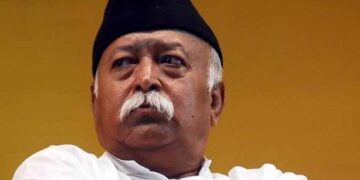Rukhmabai Raut (English: Rukhmabai Raut, born 22 November 1864; died 25 September 1955) was India’s first female doctor. She was also at the center of a landmark legal case which resulted in the enactment of the Age of Consent Act, 1891. Rukmabai wanted to become a doctor and wanted to serve the people. His decision got the support of his family and people. For this, a fund was prepared for sending and studying in ‘London School of Medicine’. From there Rukmabai graduated and returned back to India in 1895. Rukmabai chose the women’s hospital of Surat. He practiced medicine throughout his life. Dr. Rukmabai was also a social reformer, who raised voice against many evils and spoke openly for women and child rights.
Rukmabai was born on 22 November 1864 in Mumbai in the carpenter community. His father’s name was Janardan Pandurang and mother’s name was Jayantibai. After the death of Janardan Pandurang, Jayantibai handed over her property to 8 year old Rukmabai. Rukmabai was married to Grandfather Bhikaji against her wishes at the age of eleven. Child marriage was common at that time. Although she was allowed to complete her education, her husband, Grandfather Bhikaji Raut, gradually forced her to live with him. In March 1884, Grandfather filed a petition in the Mumbai High Court to restore marital rights on his wife, the decision of which came in Grandfather’s favor. The court said that either they accept the court’s decision or they will have to go to jail. Rukmabai told the British government that she would rather remain in jail than remain involved in marital relations with her husband.
Years ago, when there were no rights for women, Rukmabai fought for her rights and stood against child marriage. He raised questions on the validity of marriage at the age of 11. At that time her husband was 19 years old. She had refused to live with her husband citing poverty and ill health. In 1885 the judges’ decision rejected Dadaji Bhikaji’s claim for assignment of marital rights. However, in the year 1888, an agreement was reached between Rukmabai and grandfather, in view of which Rukmabai paid compensation to her husband and got complete freedom from marriage.
Rukmabai, who became famous as ‘Hindu Lady’, wrote many letters in newspapers, on which she received a lot of support. When he expressed his desire to study, funds were collected in his support, which gave him the opportunity to study at the London School of Medicine in England. Rukmabai was encouraged by Dr. Edith Peche at Cama Hospital, who helped her raise funds for her education. Rukmabai went to England in 1889. She was assisted by suffrage activists Eva MacLaren and Walter MacLaren and the Countess of Dufferin’s fund to provide medical aid to the women of India.
Adelaide Manning and many others helped the Rukmabai Defense Committee establish a fund. Contributors included Shivajirao Holkar, who had the courage to intervene against traditions and donated Rs 500. Rukmabai then went to Edinburgh for her final examinations and returned to India in 1894 to join a hospital in Surat. In 1904, Bhikaji died and Rukmabai wore the white sari of widows in the Hindu tradition. In 1918 Rukmabai rejected an offer to join the Women’s Medical Service and joined a state hospital for women in Rajkot. He served as Chief Medical Officer for thirty-five years after his retirement in Mumbai in 1929–1930. He continued his work for improvement. Published ‘Purdah – the need for its abolition’.
Rukmabai’s story has been included in novels and films. Tannishtha Chatterjee, who is an Indian actress, has proved her acting ability in films like ‘Angry Indian Goddess’, ‘Shadows of Time’, ‘Parched’ and ‘Doctor Rukmabai’. When Tannishtha came to participate in the Jagran Film Festival, her film ‘Doctor Rukmabai’ was screened. Tannishtha, who won the Best Actress title at the New York Film Festival for the film ‘Dekh Indian Circus’, prepared her best to play the role of Rukmabai and tried to do justice to the character. Tannishtha Chatterjee said, “Rukmabai was India’s first woman doctor. I did not have the privilege of meeting her as she died in 1955, but to prepare for my role, I read her biography. Her story attracted me. She is an inspiration for women. I am lucky that I got the opportunity to play her role.”






